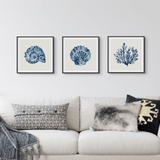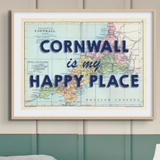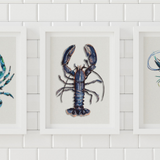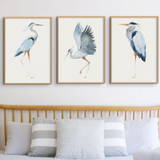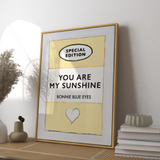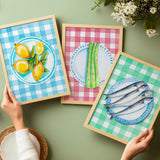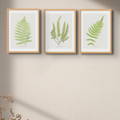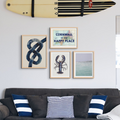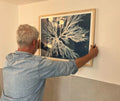Art Therapy and How It Can Help Relieve Stress
Art is good for your mental health, so why not give it a try.

Anxiety and stress are common experiences for many people, and finding effective ways to manage these feelings can be challenging. However, art can be a powerful tool for managing anxiety and stress.
Art as a Stress-Relieving and Calming Activity

You are just a couple of pens or pencils away from starting to create your own art.
Here are some practical tips on how to start drawing or painting to de-stress:
1. Find a quiet place where you can relax and focus on your art. This could be a corner of your bedroom, a spare room, or even the kitchen table. Make sure the space is free from distractions, such as your phone or laptop.
2. Choose materials that you enjoy working with. If you're not sure what to use, start with basic supplies like pencils, pens, paper, and paint. You can always experiment with different materials later.
3. Don't worry about making your art look perfect. The most important thing is to express yourself. So relax, let your imagination flow, and have fun!
4. Take breaks as needed. Art therapy should be a fun and relaxing experience. If you start to feel overwhelmed, take a break and come back to it later.
5. If you find that art therapy is not helping you to manage your anxiety and stress, talk to your doctor or a mental health professional. Art therapy is not a replacement for professional help, but it can be a helpful tool in addition to other treatment options.
Here are some additional tips for drawing or painting to de-stress:
• Choose a subject that you find calming or relaxing. This could be a scene from nature, a portrait of a loved one, or even an abstract design. We have a video of ‘How to Paint an Abstract Knot’ below that you can use as a guide and inspiration.
• Use colours that you find soothing. Avoid using bright, jarring colours that can be stimulating.
• Focus on the process of creating art rather than the end result. The goal is to relax and de-stress, not to create a masterpiece.
• Listen to calming music or nature sounds while you create. This can help to further relax your mind and body.
• Take deep breaths and focus on your breath as you draw or paint. This can help to reduce stress and anxiety.
• If you find yourself getting frustrated, take a break and come back to it later. There's no need to rush.
Drawing and painting can be a great way to de-stress and relax. By following these tips, you can create a calming and therapeutic art experience that can help you to manage your anxiety and stress.
By setting aside time for casual art, you give yourself a break from technology and distractions, allowing your mind to unwind, destress, and find solace in the present moment.
So, the next time you feel overwhelmed, grab a pencil or paintbrush and let your imagination have fun. If you don’t know where to start, why not try our knot painting below?

How to Paint an Abstract Knot
Here is an example of a video on how to paint an abstract knot that can be used as a relaxing activity to manage stress and anxiety, below.
You could also try adult colouring books or mandalas. Here are a couple of links to buy books.
https://coloringbookaddict.com/mandala-coloring-books-relaxation/
https://www.waterstones.com/category/hobbies-quizzes-games/adult-colouring-books

How Art Therapy Works
Art therapy works by helping individuals to process their emotions through creating art. Creating art can help individuals express themselves in a way that words may not be able to convey. This process can help reduce stress and anxiety and lead to a better understanding of oneself.
Art therapy provides individuals with a unique opportunity to explore their emotions and experiences through the process of creating art. One of the beautiful aspects of art therapy is that it allows for complete freedom and privacy. You don't have to show anyone the artwork you create unless you choose to do so.
You also don’t have to draw anything meaningful or important, a beach scene or drawing a tree can be therapeutic.
This freedom to keep your artwork private is essential in art therapy. It creates a safe space for personal expression without the fear of judgment or criticism. In this private and non-judgmental environment, you are free to explore your inner thoughts, feelings, and experiences through various artistic mediums.
Art therapy encourages experimentation, allowing you to try different techniques, materials, and styles. There are no rules or expectations to follow. You can use vibrant colours, abstract forms, or any other creative approach that resonates with you. The process of experimentation can be liberating, enabling you to discover new ways of expressing yourself.
Through art therapy, you can access emotions and experiences that may be challenging to express verbally. Sometimes, words alone cannot capture the complexity of our thoughts and feelings. Art provides a visual and tangible outlet for these emotions, allowing you to communicate and process them more holistically and intuitively.
The indigo on our abstract knot print is a calming and relaxing print.
Benefits of Art Therapy
Art therapy has been shown to be effective in reducing anxiety and stress in a number of ways. First, art therapy can help you to focus on the present moment and to let go of worries and concerns. Second, art therapy can help you to express your emotions safely and healthily. Third, art therapy can help you build self-esteem and develop a sense of control over your life.
You can also find art therapy kits that contain all of the materials you need to get started online.
Botanical Prints can relieve stress and help calm you.
The Benefits of Art Prints in Your Home For Mental Health
Hanging art in your home can have a profound and positive impact on your mental health and overall well-being.
Numerous studies, including Chelsea and Westminster Hospital in London, have shown the therapeutic benefits of visual art and its ability to enhance our emotional state, reduce stress, and promote relaxation.
Just as art installations have been proven to improve the mental health of individuals in medical settings, surrounding yourself with art in your own living space can create a similar positive effect.
Art has the power to inspire and uplift, offering a sense of solace, comfort, and beauty. It provides a form of self-expression and a means to connect with our emotions, thoughts, and experiences.
By curating an environment filled with art that resonates with you, you create a sanctuary that supports your mental health, encourages self-reflection, and promotes a sense of tranquillity. So, whether it's a captivating painting, a vibrant print, or a meaningful custom print, let art become an integral part of your home and nurture your mental well-being.

